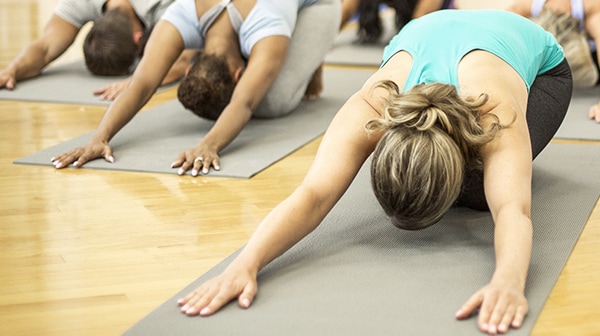Beating lower back pain
Your lower back does all the heavy lifting for your body so it’s important to look after your lumbar spine.
Fit&Well magazine
June 2014
When you sit, cook, lift a child or carry a backpack, you probably don’t think about your lower back, even though it’s your body’s scaffolding and supports your head and neck, shoulders, arms, pelvis and rib cage.
Your back houses the spinal column that keeps you upright. It threads down around 30 connecting vertebrae, which are cushioned by spongy discs and attached to muscles, tendons and ligaments. Over time, injuries or constant strain can lead to minor twinges, or chronic pain that interferes with everyday activities.
“Between 70 and 80 per cent of people experience back pain at some time in their lives,” says back expert Anna-Louise Bouvier, a Sydney physiotherapist who helps about 1,400 people each week with their back pain. Weight gain can be a common trigger for lower back pain, as can poor posture, footwear and incorrect lifting techniques.

Straighten up
Be aware of your posture throughout the day. “When standing, keep your weight evenly balanced between both feet and your shoulders back without being strained,” says Bouvier.
“When sitting, keep your shoulders back in line with hips, put feet flat on the floor or on a foot stool and put a small pillow or support behind your back to support your lumbar spine.
”Also, try and reduce what you carry. “This is particularly important for backpacks and heavy shoulder bags, which can contribute to slumped posture and lower back pain if too heavy,” she adds.
Put your best foot forward
Sorry, ladies, but according to Brenden Brown, spokesperson for the Australian Podiatry Council, “High heels tilt your pelvis forward, throw your centre of gravity out of alignment and force your back muscles to work harder to maintain stability.”
He advises that women who suffer lower back pain to opt for shoes with a wide, flat heel no higher than 2.5 centimetres, while men should avoid loafers and thongs. “Lower back pain can also be treated in some people by addressing poor foot posture with orthotic supports in shoes,” Brown explains.
Break a sweat
Studies show that people who exercise regularly suffer less back pain. However, choose your exercise carefully. Running may increase the risk of back pain for some people, while swimming usually helps ease it by supporting your back as you exercise.
The best exercise for back pain? Cross-training. Engage in a variety of exercise including aerobic activity, walking and weight training, as well as yoga and tai chi for improved flexibility and balance.
“Speak to a personal trainer or physiotherapist for advice on good exercise technique,” advises Dr Ben Rattray, Associate Professor in Sports Studies at the University of Canberra.
“For example, strengthening the gluteals in your bottom, and the muscles at the back of the hip and inside of the thighs can help prevent alignment issues such as leaning your knees in when you walk or jog, which can throw your whole back out.”
Back up
If you’re suffering from lower back pain these approaches can help:
- cold pack, followed by a hot pack
- over-the-counter analgesics like paracetamol, or anti-inflammatories such as ibuprofen. However, these aren’t advisable for long-term use
- keep mobile rather staying than in bed when you’re having an acute episode. While it’s wise to avoid activities that worsen the pain, not moving at all will also make things worse.
If the pain persists, see your GP who may prescribe muscle relaxants or order x-rays or other tests.
Related Articles
HOW PHYSIOTHERAPY WORKS
Physiotherapist Phil Calvert, Regional Manager, Physiotherapy, from the Women’s and Children’s Health Network in South Australia explains.
HOW CHIROPRACTIC WORKS
Bernard Rupasinghe, Policy Manager for the Chiropractic Association of Australia, explains.
EXERCISE FOR HEALTHY BONES
Bone health is a key factor in ageing well and exercise can help you build stronger, denser bones.
IS YOGA IS GOOD FOR YOU?
More people every year are turning to yoga, but are there proven health benefits?